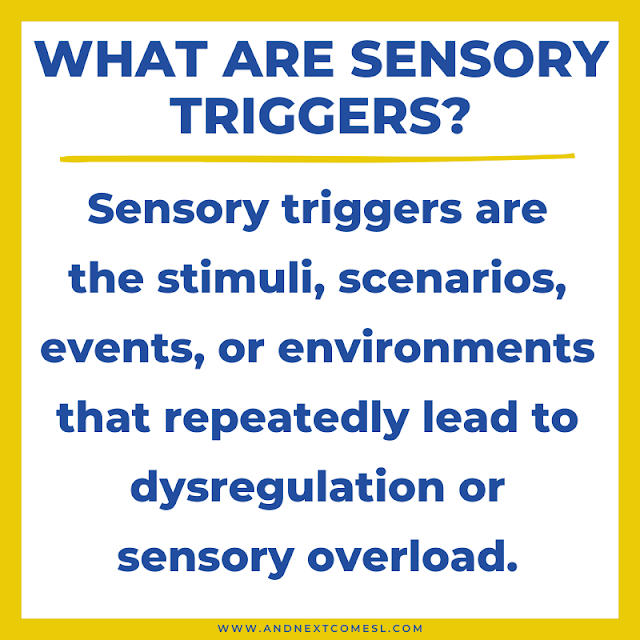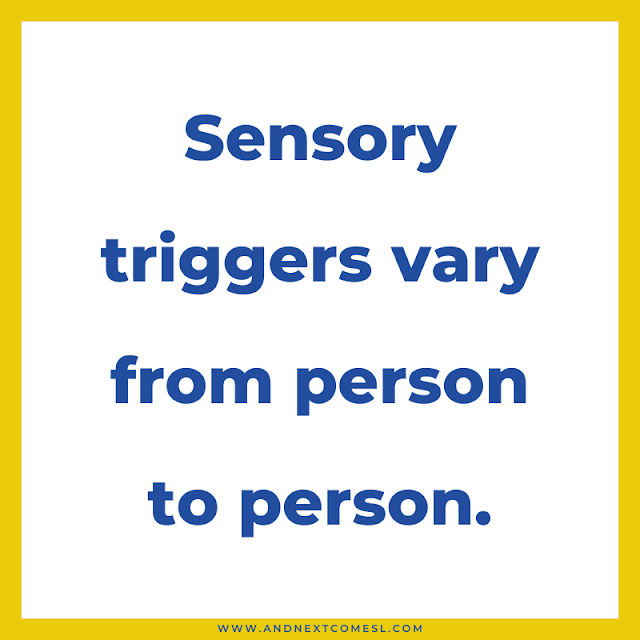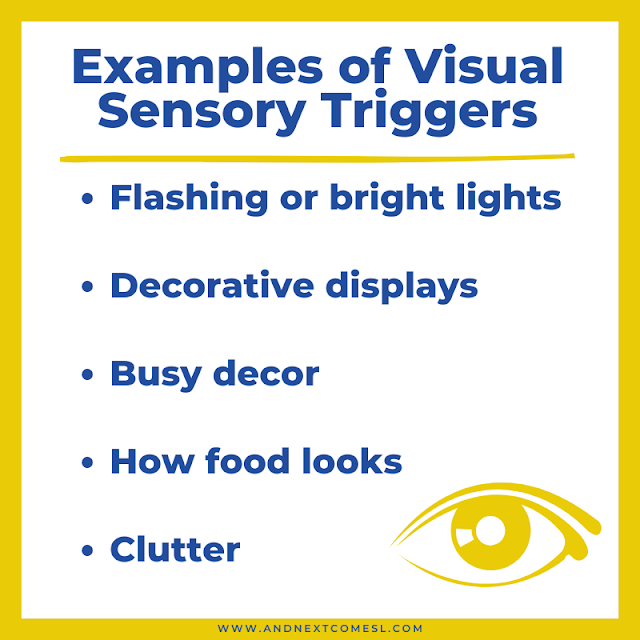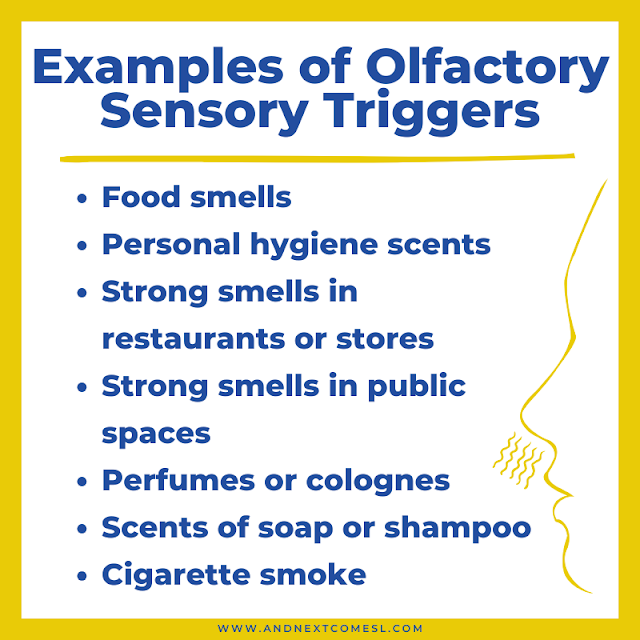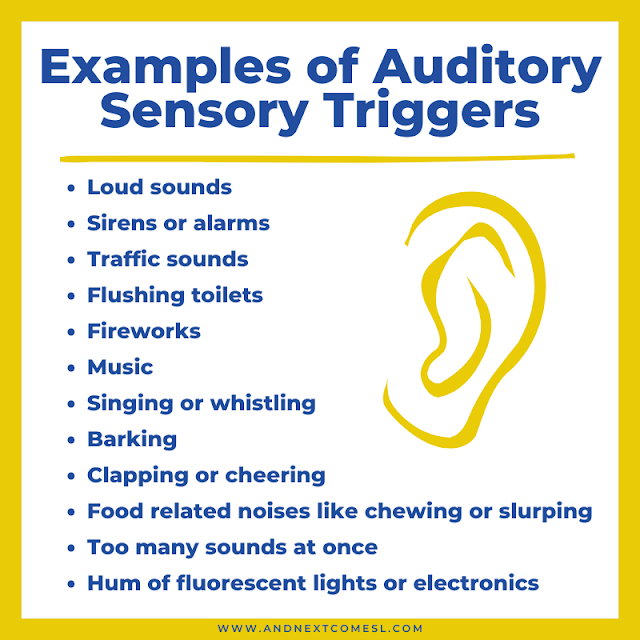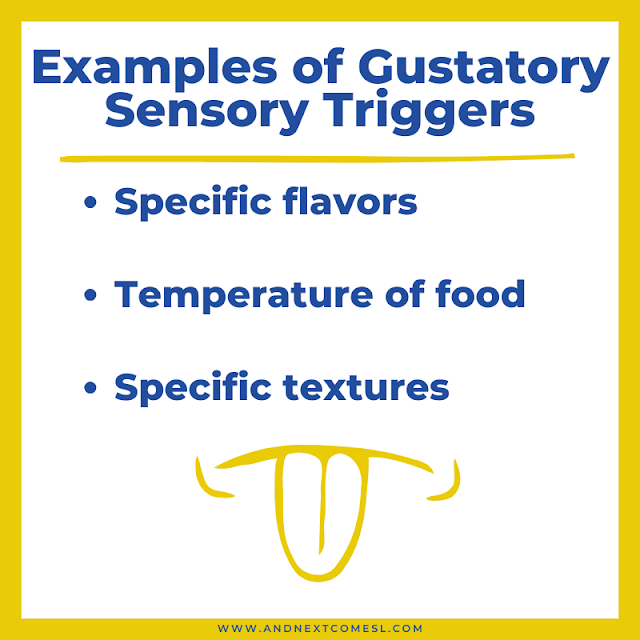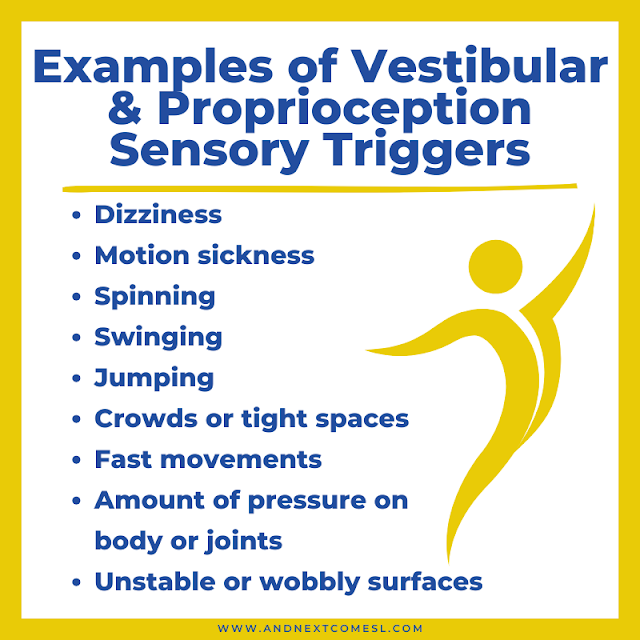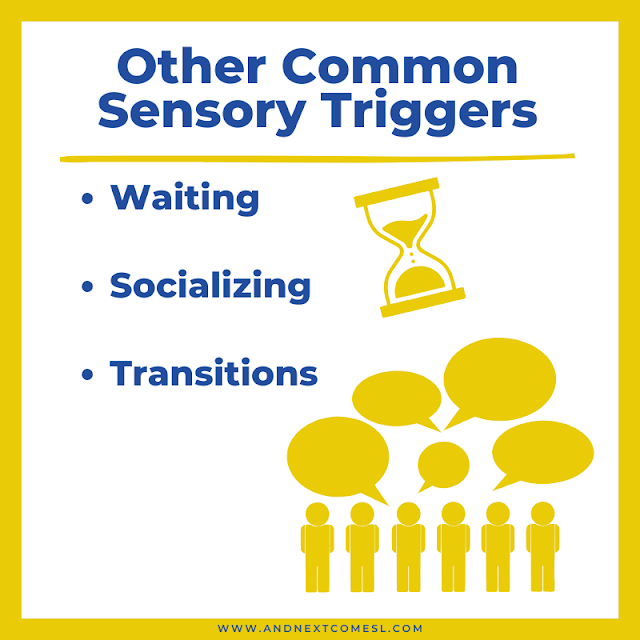When you're first learning about sensory needs and sensory processing, you'll come across a lot of different terms and phrases. Things like sensory overload, sensory seeking, sensory avoiding, sensory diets, sensory triggers, and so forth. It can be a lot of new terms to learn.
The focus here though, obviously, is sensory triggers. I mean the title kind of gives it away...
Specifically, we're going to take a closer look at the question, what are sensory triggers?, and go over some of the basics.
After a quick definition, we'll look at some common example triggers. Then we'll discuss why it's important to know your triggers. That way you'll hopefully have a deeper understanding of why this particular phrase keeps popping up when learning about sensory processing.
So...What are Sensory Triggers? A Definition
Sensory triggers can be defined as the stimuli, scenarios, events, or environments that repeatedly lead to dysregulation or sensory overload.
In other words, they are the bothersome things, situations, or sensory experiences that regularly cause intense or extreme sensory responses and make one feel uncomfortable, overwhelmed, stressed, or in pain.
Sensory Triggers are Individual & Repetitive
One thing to keep in mind is that sensory triggers vary from person to person (or child to child). One person's triggers might be more visual in nature. Another's might be more auditory or tactile. The point here is that sensory experiences are highly individual.
It's also worth noting that sensory triggers can be relatively simple and easy to identify (e.g., sudden loud noises). Or, sometimes, they can be subtle or more complex and, therefore, kind of tricky to identify (e.g., when sounds are layered such as loud music paired with people talking at the same time).
It's also important to note that repetition is key when it comes to sensory triggers. In other words, there should be some kind of pattern to it.
If the same type of sensory stimuli (e.g., the sound of the hand dryer in public washrooms) triggers a heightened response time and time again, then it would be considered a trigger.
On the other hand, if there's no repetition or pattern, it's more of just a one-off sensory response. Although it could be the first of many to come and could become a trigger down the road. So, keep that in mind.
When it comes to sensory triggers, you want to look for that repetition or pattern. Ask yourself if it's replicable. In other words, the same specific sensory experiences cause heightened responses nearly every single time. If it does, then it's likely a sensory trigger.
Common Example Sensory Triggers to Watch Out For
Now that you have an idea of what sensory triggers are, let's take a closer look at some specific example sensory triggers. Obviously, this list is not exhaustive, but it should give you an idea of some possible triggers to watch out for.
- Visual (sight): flashing or bright lights, decorative displays, busy decor, clutter, how food looks
- Tactile (touch): washing hair, brushing or combing hair, cutting hair, shaving, brushing teeth, certain fabrics, clothing tags or seams, water on face or in ears, hugs, unexpected touches, messy or dirty hands, touching something sticky, tightness or looseness of clothing, wet or dirty clothes
- Olfactory (smell): food smells, personal hygiene scents (e.g., body odor), strong smells in restaurants or stores (e.g., laundry aisle), strong smells in public spaces (e.g., public washroom), perfumes or colognes, scents of personal care products (e.g., soap or shampoo), cigarette smoke
- Auditory (sound): loud sounds (e.g., sirens, alarms, traffic sounds, fans, hand dryers, vacuums, flushing toilets), fireworks, music, singing, whistling, barking, clapping, cheering, food related noises (e.g., chewing, slurping, swallowing, crunching), too many sounds at once, hum of fluorescent lights or electronics
- Gustatory (taste): specific flavors, temperature of food, specific textures
- Vestibular/proprioception (balance/body awareness): dizziness, motion sickness, spinning, swinging, crowds or tight spaces, fast movements, amount of pressure on the body or joints (e.g., light touches, deep pressure, hugs), jumping, unstable or wobbly surfaces
- Interoception (inner body): temperature, internal sensations (e.g., stomach rumbling)
- Other: waiting, socializing, transitions
As you can see, there are a wide range of possible sensory triggers. And they can impact any of the 8 senses.
Why it's Important to Know Your Sensory Triggers
When you know your sensory triggers (or your child's), it's easier to know which situations, events, or environments could possibly be overwhelming to you (or your child). That way you can also plan accordingly.
For instance, maybe you preplan an exit strategy. Or maybe you think of what coping strategies or sensory accommodations will help you navigate the situation and then put those in place. In other words, you make a sensory safety plan.
Essentially, knowing your sensory triggers can help you know how to handle those specific situations or stimuli when you do encounter them.
For example, let's say one of your sensory triggers is crowded spaces. You might plan to avoid that space, go at a less busy time, or take a sensory toolkit with you that includes headphones, fidgets, and chewelry. Or maybe you know that you feel better when you wear a compression vest or have a friend with you.
Need Help Figuring Out Your Sensory Triggers? Try this Social Story!
If you or your child need some help understanding your/their own triggers, try this sensory triggers social story from the shop. It is editable so you can customize it to fit your needs.
Grab your copy of the identifying sensory triggers social story
Sensory Triggers Summary
Want a quick recap of everything discussed above? Here's what you need to know about sensory triggers:
- Sensory triggers are the stimuli, scenarios, events, or environments that regularly lead to intense sensory responses, dysregulation, and sensory overload.
- Triggers will vary from person to person. After all, everyone responds to sensory information differently and has different sensory sensitivities.
- Sensory triggers are repetitive and have a pattern, meaning that the same trigger causes heightened responses nearly every single time.
- You can have sensory triggers for any of the 8 senses.
- It's important to know which situations or events can be overwhelming to you. That way you can plan accordingly and know how to handle those specific situations or stimuli when you encounter them.
Now that we've answered what are sensory triggers?, you might find it helpful to learn more about the 8 senses and sensory overload in more detail. So I'd read those next.



